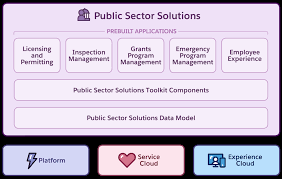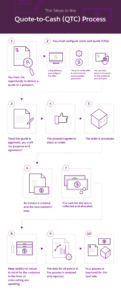Utilize dynamic apps and intake forms using omniscript in public sector solutions with Salesforce.
Develop guided application and intake forms for constituents using Public Sector Solutions with OmniScript. This technology, part of the OmniStudio suite, empowers users to create intricate web forms effortlessly, requiring minimal or no coding. Simply drag and drop interactive elements onto the OmniScript canvas, configure their properties, and arrange them according to your preferences. Elements encompass various question input types, DataRaptors drawing on Public Sector Solutions data, and other actions. OmniScripts even support embedding other OmniScripts, facilitating the creation of guided user experiences, including application and intake forms for licenses, permits, services, benefits, and grants.
Dynamic Apps and Intake Forms for Public Sector
Creating a Conditional Question in OmniScript: An Example
- From the App Launcher, access OmniStudio.
- Navigate to OmniScripts from the app navigation menu.
- Click “New” and enter details like Name, Type, Language, and Subtype for the OmniScript.
- Expand Step 1 and add a Radio element named “BusinessLegalStructure” from the Build panel’s Inputs section.
- Configure the element by entering “What is your business’s legal structure?” under Field Label and adding value-label pairs under Options.
- Add a Formula element named “exprShowBusinessLegalStructureCorporationType” to determine conditional visibility.
- Configure this formula to check if the response to the legal structure question contains “Corporation.”
- Introduce a Radio element named “BusinessLegalStructureCorporationType” with conditional visibility based on the previous formula.
- Preview your form.
Configuring Community Profiles for OmniScript Deployment
To deploy an OmniScript from a Community, adjust sharing settings and profile access as follows:
- From Setup, access Security Controls or Security and select Sharing Settings.
- For Vlocity OmniScript, set Default Internal Access and External Default Access to Public Read Only.
- Configure community user visibility by ensuring relevant profiles are in the Selected Profiles section.
- Disable the Enhanced Profile User Interface option for the Original Profile Interface.
- Set field-level security for users accessing the community and the necessary OmniScript objects.
Applying Best Practices for OmniScript Design and Performance
Design Best Practices:
- Use unique names for OmniScript elements and DataRaptor response nodes.
- Assign one owner for each OmniScript.
- Identify reusable elements by creating a skeleton of the entire OmniScript.
- Document element purposes in the Internal Notes property.
- Exercise caution when updating element names to avoid affecting DataRaptors or Apex classes.
User Interface Best Practices:
- Leverage Lightning Web Components for styling OmniScripts.
- Apply global branding using the Newport Design System.
User Experience Design Principles:
- Prefill fields using contextual data to reduce user input.
- Break processes into shorter steps to avoid overwhelming users.
- Provide contextual help text and logically order input fields.
Performance Best Practices: Client-side:
- Minimize Conditional Views, Merge Fields, and Formulas.
- Trim Response JSON for quicker application.
- Optimize element names to enhance load time.
- Limit the number of elements in a script.
Server-side:
- Trim JSON request payload size for server efficiency.
- Use Integration Procedures to reduce server roundtrips.
- Enable asynchronous execution for Integration Procedures.
- Trim DataRaptor extract output to remove unnecessary data.
Understanding OmniScript and Salesforce Flow Differences
OmniScript, part of the OmniStudio suite, allows the creation of dynamic, code-free forms, providing a responsive single-page experience. Salesforce Screen Flow, on the other hand, is a type of Flow used to enhance user experiences. OmniScripts are UI-first designers, emphasizing visual and interactive components, while screen flows focus on process-first design. OmniScripts offer web analytics integration, low-code API consumption, and advanced data transformation capabilities, making them valuable for consumer-facing and partner-facing contexts. They utilize Integration Procedures and DataRaptors for data consumption. This insight emphasizing the importance of understanding these differences and utilizing the best practices outlined for optimal performance and design.











